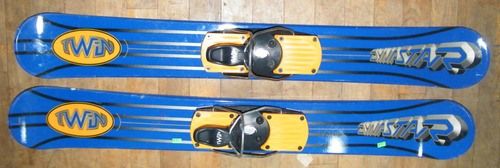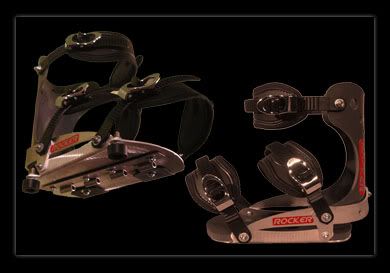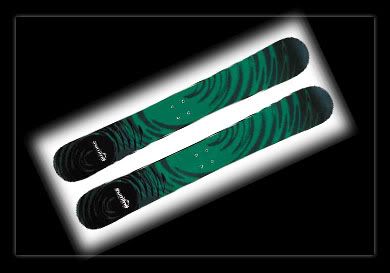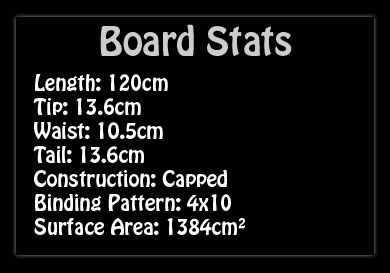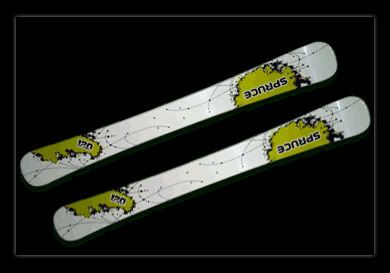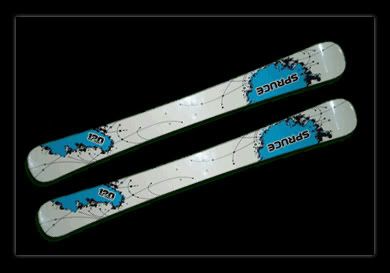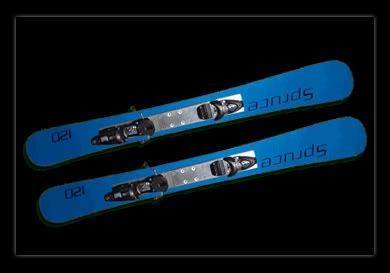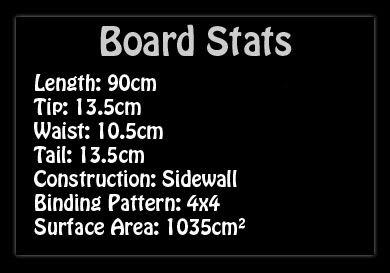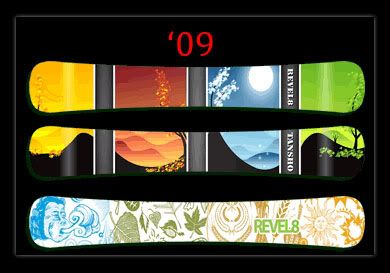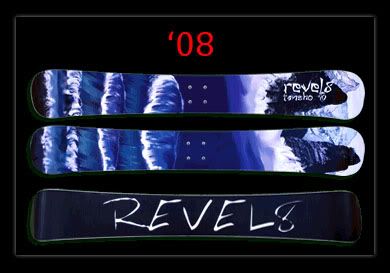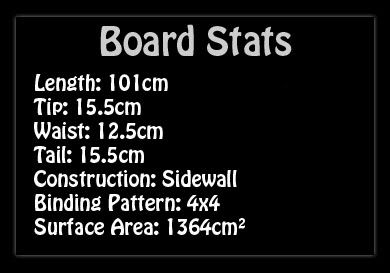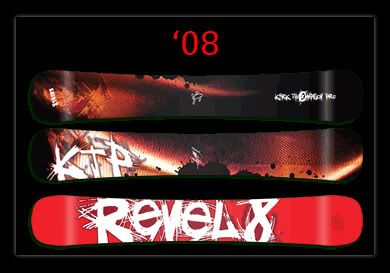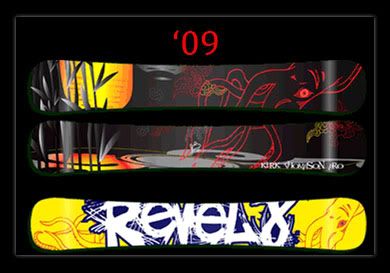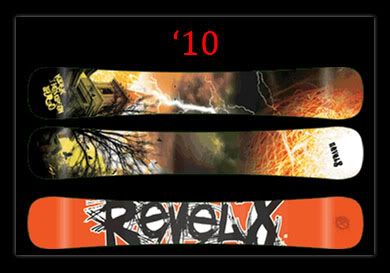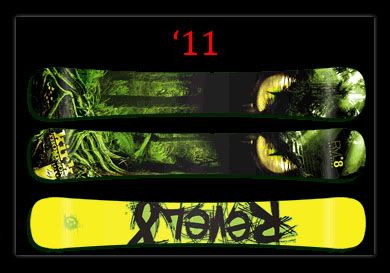The newest RVL8 offering, the Spliffs are the result of 4 years of experimentation with rocker skiboards. With a rocker-camber combo they lean more towards a traditional camber skiboard feel than RVL8’s previous rockered offerings, less of the “surf-like” feel than the Blunt XL skiboards.
This makes them a freerider’s one quiver dream, having a big performance envelope. They are fairly big skiboards, at 109cm long and 13cm wider underfoot, but the rockered tips make them feel and control much more like shorter skiboards on groomers, as the rocker elevates the tips out of the way. The rockered tips jump into play when pushed into carves and turns, giving them the edge control of the full 109cm when you need it. Like any wider skiboard they do take a bit more effort and are a little slower to get up on edge, but the rockered tips make initiating turns effortless, rarely catching an edge.
On piste, it takes a bit of time to get acquainted with the point at which skiboards are pushed enough for the tips to engage and the full edge length can be relied upon. I sometimes find myself thinking the tips will engage, when they don’t, or vice-verse, but this confusion has slowly eroded the more I ride them. The 6.5m turning radius is not out of the ordinary for the size, allowing for the deep short carves most skiboarders love. Thanks to the underfoot camber, skating around flats is a breeze, added bonus!
The Spliffs shine in deep snow and off-piste. I felt not acquaintance time here, they just perform. The rockered tips aided by their width give a great amount of lift in soft deep snow with that lively pop from the camber. The flex range that the rocker-camber provides feels amazing. I feel like I have butterfly wings under my feet feeling poppy and light, with a large reach of support and lift. I find a 2-4cm setback is preferable for powder to put more weight on the tails and prop the front tips up and found myself leaving them setback without noticeable difference in performance on groomed snow.
I have had virtually no issues with tail support like I felt on zero-camber rockered skiboards. I can count on the tails to support me, rarely feeling like they will slip out from under me. Landing drops and pressing the tails rarely feeling the need to hold back thanks to the extra support the extension of the under foot camber provides.
They are not undefeated however. On a very heavy concrete sticky powder day, I found myself wishing for a pair of Blunt XL’s, struggling to keep the tips up, heavier and taller riders might have less of an issue with that as their extra leverage could more easily bring the tips up in these conditions, and in such harsh conditions its hard to expect miracles anyways.
Being pretty big skiboards, freestylers, park rats, and fancy foot-workers will feel the size and they can be a lot to throw around without the precise edge of fully cambered skiboards. This is where they felt the most rocker “surf-like”, by not being able to rely heavier on the full pop and full edge control of the 109cm length. They aren’t terrible, in the park, just a little confusing, as the rockered tips rarely engage enough in the park unless pushing a deep carve off a kicker or fully pressing down on the tips. They do however feel less sloppy than fully rockered skiboards in the park. That said, these favor freeriders, and the rockered tips are super fun and effortless to press around, doing butters and presses over hips even in powder, hitting choppy banks and natural features, in a more freeride style and knowing the support of that wide range, rocker-camber tail will catch you on the way down!
These have been by far what I consider to be the best freeride skiboards I’ve tried, impressive for a sub-110cm category, skiboard. Thanks to the rocker-camber combo, they have a huge performance envelope, but they need to be ridden fairly aggressively in order for them to show their true potential, being geared towards intermediates to advanced riders, heavier and taller riders, those looking at going off-piste looking for steep and deep, while still maintaining very decent on-piste performance. Beginner and non-aggressive riders don’t stand to gain much from riding the Spliffs over other options.
I would love to see variations in length for this rocker-camber combination. The point at which these skiboards are pushed enough for the tips to engage enough and the full edge can be relied upon is very subjective to the rider. Chopping 10cm off the length while keeping the same rocker-camber ratio and same width would give lighter and shorter their own freeride possibilities, (or even adding an extra 10cm for even larger riders!)
Rider – Jason Roussel Co-Founder SkiboardReview.com – Expert Skiboarder

